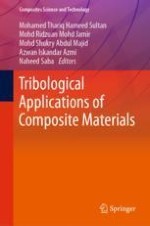This book covers the current advances and practices in tribological applications of composite materials under various processes, presenting the development, characterization, and morphological properties of composite materials in tribological applications. It covers a wide range of subjects, extending from fundamental research on the tribological characteristics of various multi-phase materials to the final applications of composites in wear loaded, technical components. It brings together contributions from researchers who discusses innovative experimental approaches and analytical techniques, creating a reference with comprehensive coverage of modern research techniques and the potential application of tribological composites in biomedical, aerospace, automotive, marines and construction industries. This volume will be of interest to material science researchers working in both industry and academia
